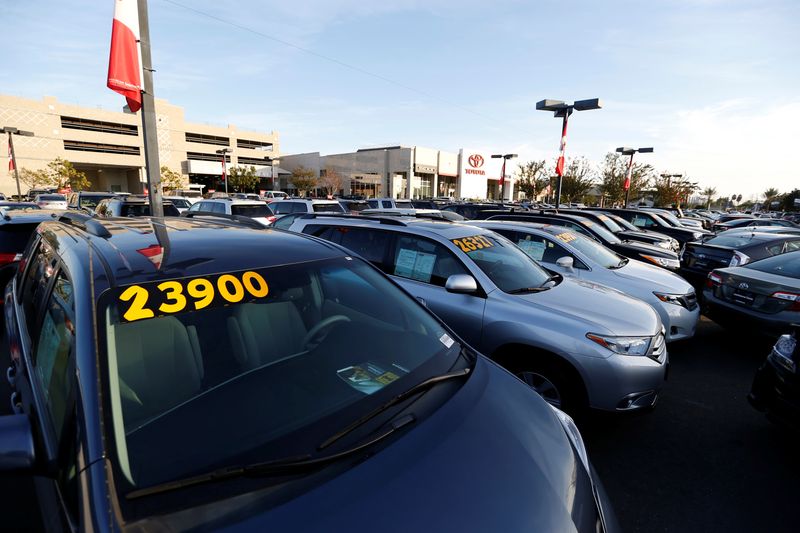By Nathan Gomes and Joseph White
(Reuters) -U.S. auto retailer AutoNation (NYSE:AN) on Friday posted better-than-expected second-quarter revenue, as demand for new vehicles and aftermarket services offset the impact of a decline in used-vehicle sales.
Demand for used vehicles, which accelerated during the pandemic, has taken a hit after automakers started to ramp up production as the global supply chain crisis gradually eases. That has helped companies such as AutoNation to boost their new-vehicle deliveries to customers.
Consumers wanting to buy vehicles with advanced safety technology and a lower turnover for newer models in the pre-owned market have also dented demand for used vehicles.
AutoNation said its second-quarter unit sales of new retail vehicles rose 8%, while unit sales of used vehicles fell 11%.
Chief Executive Mike Manley told Reuters that U.S. consumer demand for vehicles is strong. With automakers able to build more vehicles, inventories are rising and prices are falling from the peaks during the pandemic.
"I don't think you'll see margins at pre-pandemic levels this year," he said.
Manley attributed the decline in AutoNation's used vehicle sales during the quarter to decisions to keep inventories lean amid choppy pricing.
"As we built our used vehicle inventory in the quarter...we exited the quarter in line with industry: flat year over year," he said.
Manley said AutoNation's inventory of unsold electric vehicles (EV) are rising relative to other types of vehicles. EVs represent about 5% of AutoNation sales, but about 13% of inventory.
"We have got to continue to see growth in EV sales," he said.
The company's second-quarter revenue was $6.89 billion, higher than analysts' average estimate of $6.78 billion, according to Refinitiv data.
The slump in used vehicle demand, dubbed as "used-vehicle recession" by an analyst, has rippled across the sector, hurting profits at retailers such as CarMax (NYSE:KMX) and Carvana.
AutoNation's selling, general and administrative expenses were 63.1% of gross profit in the three-months ending June 30, compared with 55.4% a year earlier.

The company's quarterly net income dropped to $272.5 million, or $6.02 per share, compared with $376.3 million, or $6.48 per share, a year earlier.
Excluding items, it reported a profit of $6.29 per share. Analysts on average expected $5.91 per share. It was not immediately clear if the figures were comparable.